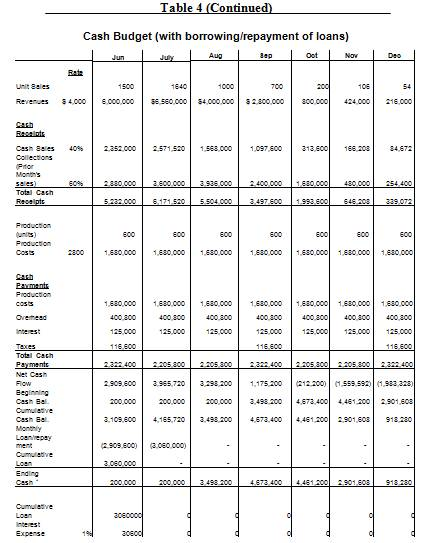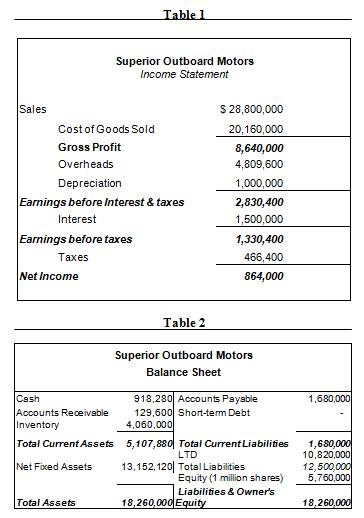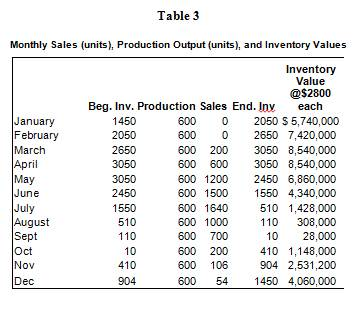Question
We have done it again, said George Brash, the president and chief executive officer of Superior Outboard Motors, to his group of senior managers at




We have done it again, said George Brash, the president and chief executive officer of Superior Outboard Motors, to his group of senior managers at their January meeting. Our sales for this past year are up over 8% compared to the previous year, but our net profit margin and earnings per share are down! The shareholders are understandably upset and are demanding answers. It wont be long before the analysts change their recommendations. We better come up with some explanations and strategies to rectify the problem.
Superior Outboard Motors, headquartered in Tampa, Florida, had manufacturing facilities in Blaine, Washington and Elkhart, Indiana. It specialized in the manufacture of outboard motors of various capacities, for small to medium sized boats. The average selling price of its motors was $4000 and the cost of production was $2800 per unit. The company had been in business for over 10 years and was well respected in the industry.
In particular, analysts had rated its after-sales service, consumer relations, and treatment of employees pretty high in comparison with its competitors. The companys stock (SOMI), which traded in the over the counter market, had appreciated significantly up until the first quarter of the current year. After that, however, the company had reported a drop in EPS for three quarters in a row causing the stock price to go down and the shareholders to make frantic calls to the consumer relations office.
I think I know what the problem is, George, said Matt Snow, the vice-president of finance. I have taken a look at our financial statements (see Tables 1 and 2) and inventory figures for last year (see Table 3). While most of the expenses seem to be reasonable, I strongly believe that the policy of level monthly production, which was implemented at the start of the year, is the main culprit. Ours is a seasonal business with the peak season being during the months of May-August. Yet, we seem to be maintaining a level production rate of 600 motors per month. As a result, our inventory builds up significantly during the lean months and sits there tying up our capital. With interest rates as high as they have been on our short- term borrowing (prime rate plus 3%, i.e. 9% plus 3%), the interest charges have been killing our profits.
As you can see in this cash budget that I have prepared (Table 4), our short-term debt varied between $2.09 million and $7.09 million during the first six months of the year. We ended the year with no short-term debt, but ended up paying almost $290,000 in interest expenses for the year. Thats money that was spent primarily to finance inventory, which I might add, sat around for a few months. I recommend that we drop the level production policy and align our monthly production output with the forecasted sales for the month. I havent worked out all the numbers yet, but I am quite sure that we will be able to boost our earnings quite a bit by making that change.
Wait a minute, said Mike Cooper, the production manager, from the other side of the room. Have you considered the effect of that change on our workforce and employee morale? We will have to lay off people during lean times and scramble to hire more workers during peak production periods. That will have a negative effect on our operating efficiency and will result in some additional costs for training and orientation. My staff and I are in contact with these folks on a daily basis. I would hate to have to tell some of these nice folks that they were being laid off for a few months, especially when our annual sales have been going up. Theres got to be a better way!
Gentlemen, said George Brash, sensing that that the arguments were getting rather heated. Lets not jump to any conclusions here. I think you both have expressed valid points. On the one hand, we cant lose sight of the fact that we value our employees and must continue caring for them. Yet on the other, we have a responsibility to our shareholders. We cannot let our earnings and stock price keep on dropping, especially considering the fact that our sales have been going up on a consistent basis. As you all know, the market can be merciless, once the analysts change their tone. Matt, why dont you do the necessary number crunching and present the results at our next meeting. Lets analyze all aspects of our working capital management policies and try and come up with the best possible alternative. I think this experience clearly proves that in our business, as in most businesses, Timing is everything!
Questions:
1. Comment on Superior Outboard Motors absolute and relative liquidity positions.
2. Examine the companys monthly inventory turnover ratio. What does it indicate?
3. How long are the firms operating and cash cycles? Using a suitable diagram show the breakdown of the firms operating cycle into its relevant components. What do your findings indicate?
4. How much higher would the firms earnings per share have been if it had followed a policy of aligning the production output with the number of units sold each month?
5. Calculate the monthly net working capital figures for the company. Comment on your findings.
6. Is the firm following an aggressive or a conservative financing policy for funding its working capital? Explain.
7. Is Matt correct in stating that the main culprit is the firms production policy? Besides changing the production levels per month, are there any other things that the firm can realistically do to boost earnings per share?
8. Using Dupont analysis, comment on the firms profit situation.
9. Do you agree with the production managers comment that that theres got to be a better way? Please explain.
Step by Step Solution
There are 3 Steps involved in it
Step: 1

Get Instant Access to Expert-Tailored Solutions
See step-by-step solutions with expert insights and AI powered tools for academic success
Step: 2

Step: 3

Ace Your Homework with AI
Get the answers you need in no time with our AI-driven, step-by-step assistance
Get Started


